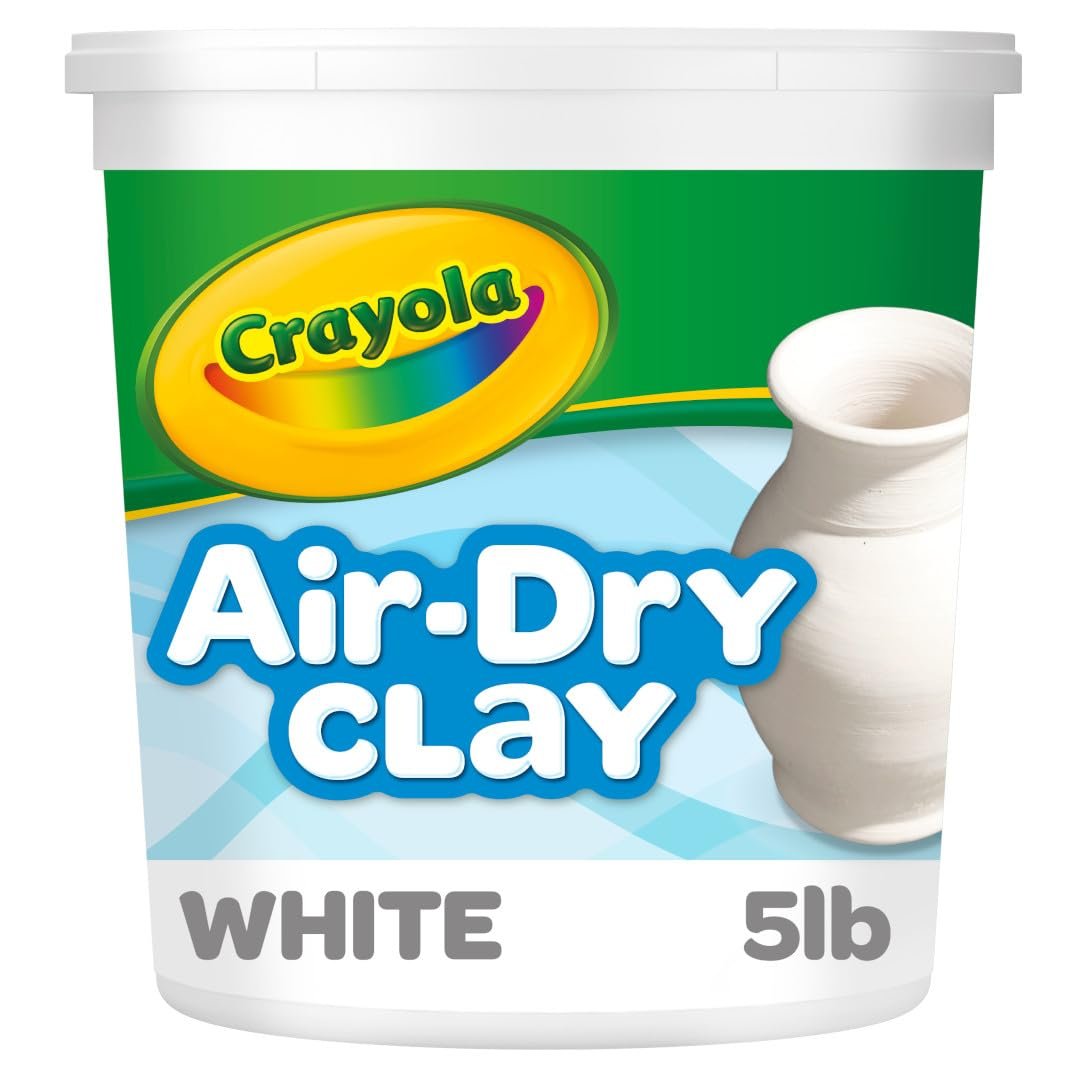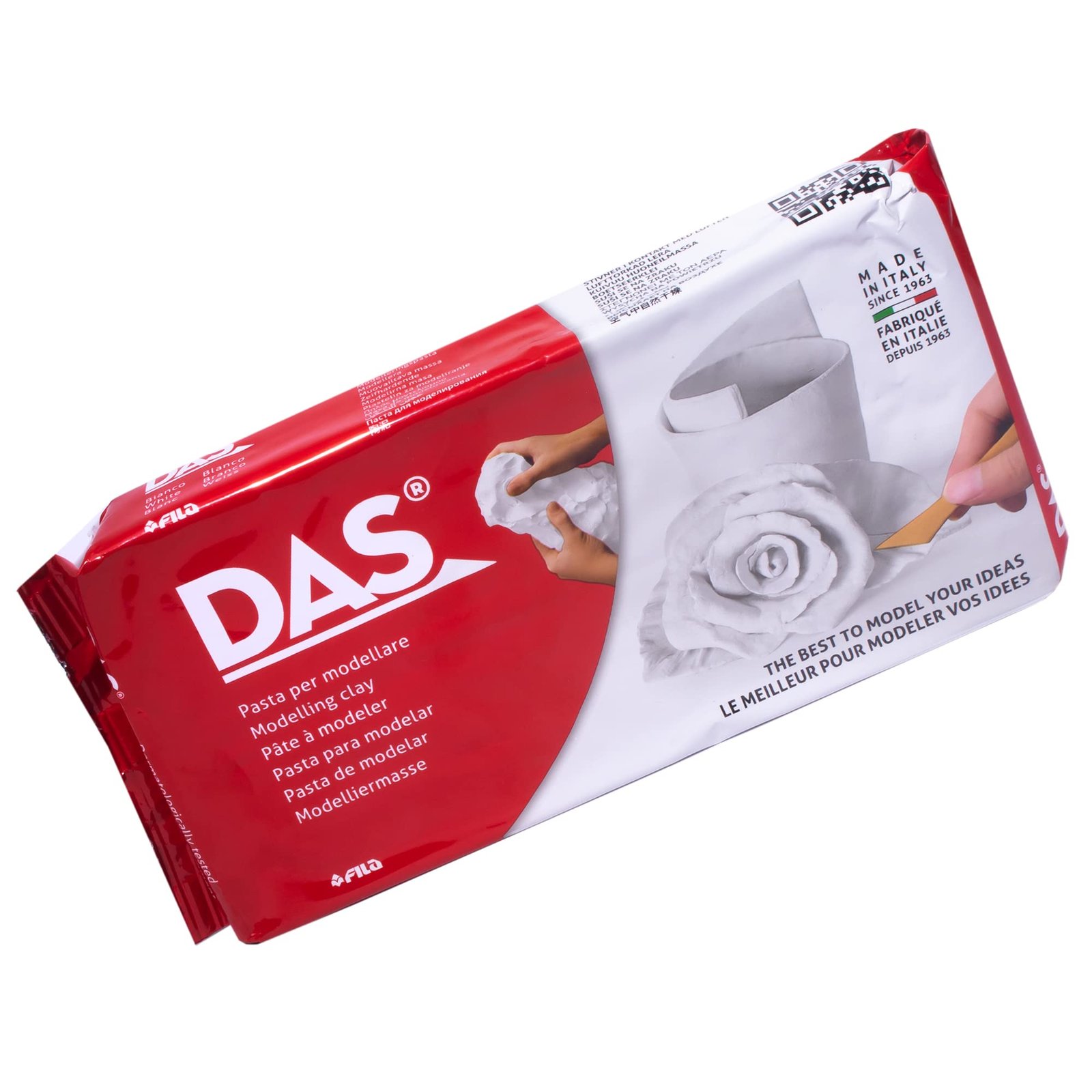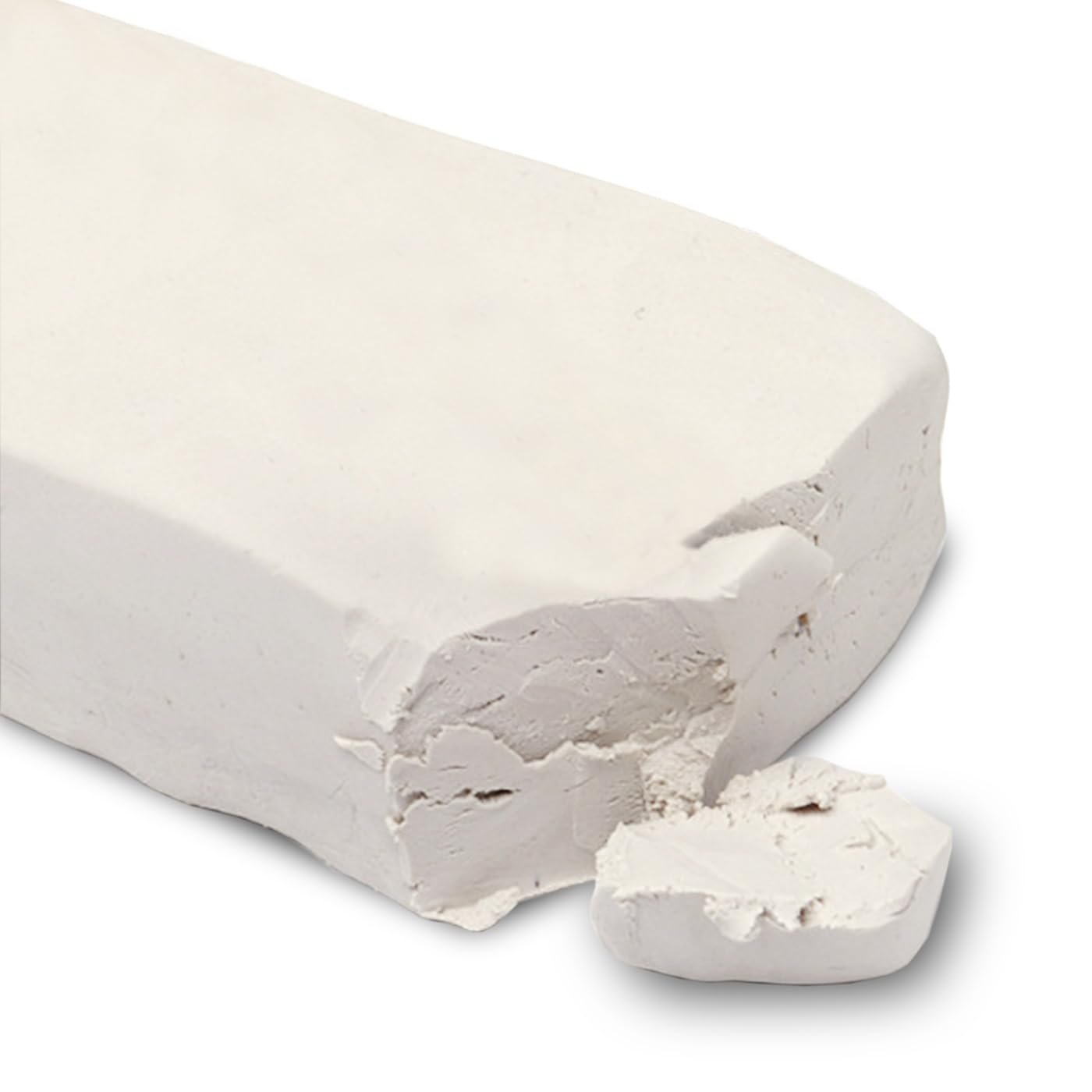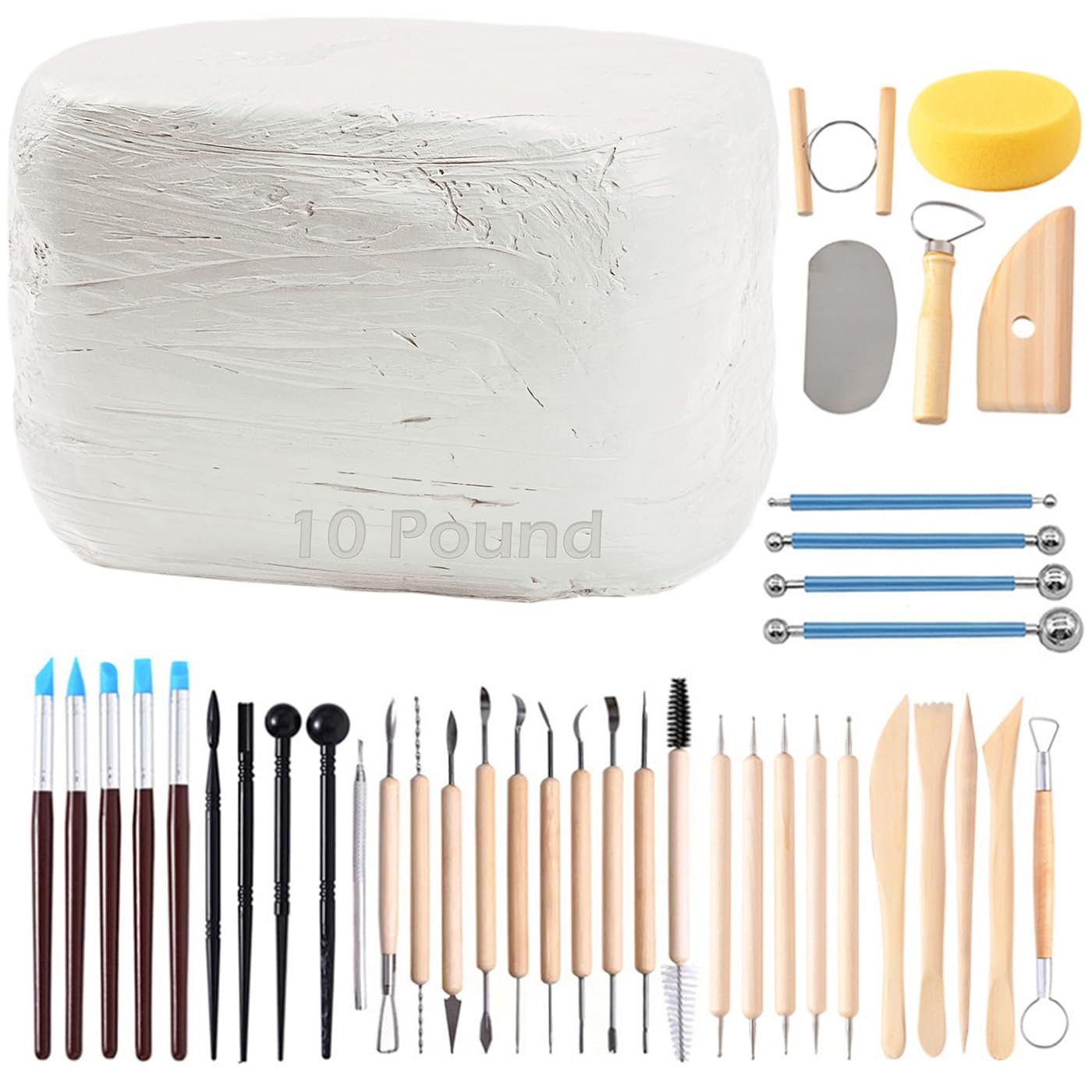Air-dry clay is a fantastic medium for beginners looking to dip their toes into the world of clay sculpting.
Unlike kiln-fired clays, which require specialized equipment, air-dry clays cure naturally when exposed to the air.
This makes it accessible for hobbyists or those just exploring their creativity without a hefty investment in tools.
Whether I’m crafting small figurines or intricate home decor, I appreciate the simplicity of working with clay that doesn’t need firing.
As someone who often enjoys hands-on projects, I find air-dry clay to be forgiving and versatile.
It comes in various textures and finishes, allowing for a range of artistic expression.
Not only can it be painted or glazed once dry, but it also dries to a lightweight and durable finish, which is perfect for different types of projects.
Plus, it’s easy to clean up, making my workspace less of a hassle.
When shopping for air-dry clay, there are a few key factors to consider.
The texture can vary significantly between brands, affecting how you shape and sculpt your projects.
It’s also important to check the drying time and whether the clay is non-toxic, especially if kids will be involved.
Knowing these details can help you select the best product for your artistic journey.
Best 4 Air-Dry Clays for Beginners in Clay Sculpting
I’ve tried out several air-dry clays and found some real gems that are perfect for beginners in clay sculpting.
Below, you’ll find my top picks to get you started on your creative journey without the need for a kiln.
Crayola Air Dry Clay (5lbs)
This clay is a solid pick for those starting out in clay sculpting due to its ease of use and kid-friendly nature.
- A great amount of 5 pounds to work with for multiple projects.
- Non-toxic and safe for children aged 3 and up.
- Versatile, allowing for different sculpting techniques.
- Can crack during drying if not handled properly.
- Requires water for softening, which may not always be convenient.
- Some users reported minor quality control issues with packaging.
Crayola’s Air Dry Clay comes in a generous 5-pound bucket, making it perfect for group projects or playdates.
I like that it’s designed for small hands, making it ideal for kids to explore their creativity without the hassle of a kiln.
The clay air dries, which is a big plus for anyone wanting quick results without extra equipment.
Using traditional sculpting techniques like coil and slab is easy with this clay.
It can also be painted once dry, adding another layer to artistic expression.
Cleanup is straightforward, as it washes off easily with soap and water, keeping things neat.
While this clay has many strengths, it can be prone to cracking if not cared for during the drying process.
It’s important to handle it gently to avoid any disappointments in the final product.
Despite this, the value it offers for classrooms and at-home crafts makes it a worthwhile consideration.
DAS Air Hardening Clay
This clay is a solid choice for anyone looking to start their journey in sculpture due to its ease of use.
- Great flexibility and easy to mold.
- No baking required—just air-dries naturally.
- Available in multiple sizes for various projects.
- Can crack if not monitored while drying.
- Strength may not match that of traditional clay.
- Requires patience as bigger projects take longer to dry.
The DAS Air Hardening Modeling Clay makes crafting a breeze.
I find the smooth texture allows for stress-free molding, making it great for those just starting out.
It’s a versatile choice, suitable for everything from simple decorations to more intricate sculptures.
I’ve noticed that the ease of use really shines through.
It seems to hold details nicely, perfect for anyone looking to create unique shapes.
It also comes in different package sizes, which means I can choose just what I need for my projects.
That said, it’s important to keep an eye on it as it dries.
I’ve heard mixed feedback about cracking, so monitoring the process can help avoid those issues.
Old Potters Air Dry Clay
This clay is a solid option for anyone looking to start their clay sculpting journey.
- Made from high-quality organic materials.
- Safe for all skill levels, from beginners to experts.
- Can be reused for multiple projects.
- Prone to cracking if not dried correctly.
- Requires supports like metal wire to avoid structural issues.
- Some users report it dries faster than expected.
Old Potters Air Dry Modeling Clay weighs in at 10 lbs, making it suitable for a variety of projects.
With its all-natural composition, I appreciate that it’s free from fillers and artificial agents.
This feature not only makes it safer to use but also aligns with a desire for eco-friendly materials.
When working with this clay, I’ve noticed that it’s important to allow it to dry in a well-controlled environment.
Proper drying techniques can prevent unwanted cracks, which can be a common issue for air-dry clays.
Utilizing supports like metal wire during the modeling process can offer additional stability, enhancing your creations.
With a sturdy texture, this clay allows for decent detailing.
It’s versatile enough for different projects, whether I’m crafting small figures or larger models.
ReArt Air-Dry Clay
This clay is a solid choice for both beginners and experienced sculptors looking for a reliable air-dry product.
- Exceptional plasticity for detailed work.
- Dries strong with minimal shrinkage.
- Suitable for a variety of artistic applications.
- Can dry quickly, requiring careful handling.
- May need moisture retention methods during use.
- Heavier than some other air-dry clays.
The ReArt Stone Air-Dry Clay stands out with its fine texture and versatility.
It’s made from natural earth materials, giving it a higher quality feel that artists appreciate.
The clay can be sculpted, modeled, or even thrown on a pottery wheel, making it a multipurpose option for various creative projects.
It self-hardens in about 24 hours without crumbling, which is convenient.
Once set, it can be further refined through carving or sanding, allowing for intricate detailing.
While I enjoy the qualities of this clay, it’s essential to manage its drying time.
Keeping the unused clay sealed is crucial to prevent it from hardening prematurely.
ReArt Natural Air-Dry Clay
This Air-Dry Clay is a solid choice for beginners wanting to explore their creativity without breaking the bank.
- Soft and easy to mold, perfect for starters.
- Comes with a comprehensive 40-piece tool set for various sculpting tasks.
- Non-toxic and odorless, making it safe for all users.
- The drying process can be inconsistent if pieces are too thick.
- May crumble if not sealed or painted properly.
- Some users found it a bit tricky to work with initially.
Jumping into clay sculpting can be thrilling, and I found the ReArt Natural Air-Dry Clay to be quite user-friendly.
The 10-pound package provides ample material for new artists to experiment with.
Plus, having 40 tools included means you have everything you need to try different techniques without needing to shop for extras right away.
One thing I noticed is the clay’s versatility.
It can be hand-molded or even used on a pottery wheel, catering to various crafting styles.
The non-toxic and odorless feature is a huge relief, especially for those concerned about safety.
While the clay is mostly fantastic, I did see some feedback about drying issues.
Thicker pieces may take longer to set, which could lead to cracking if not monitored closely.
Using the provided tools helps in getting the desired finish, but it’s essential to handle the clay with care to avoid crumbling.
Buying Guide
Choosing the right air-dry clay can make a big difference in my sculpting experience.
Here are some key features to consider:
Clay Type
- Natural vs. Synthetic: Natural clays usually feel softer. Synthetic options can be more versatile.
- Texture: I prefer a clay that’s smooth but still easy to shape.
Drying Time
- Quick Drying: If I’m working on multiple projects, a faster drying time helps.
- Workability Time: I want enough time to sculpt before it starts to harden.
Finish
- Paintable Surface: I look for a clay that can easily be painted once dry.
- Smoothness: A good finish means less sanding for me later.
Weight
- Lightweight vs. Heavy: Depending on my project, a lighter clay might be more suitable.
Usability
- Child-Friendly: If I’m crafting with kids, the clay should be safe and non-toxic.
- Reusability: I appreciate clays that can be reworked, allowing me to start over if needed.
Price
I like to balance quality with cost.
A higher price tag doesn’t always mean better quality, so it’s important to compare options.
With these factors in mind, I can choose the best air-dry clay for my needs and expand my sculpting skills.







